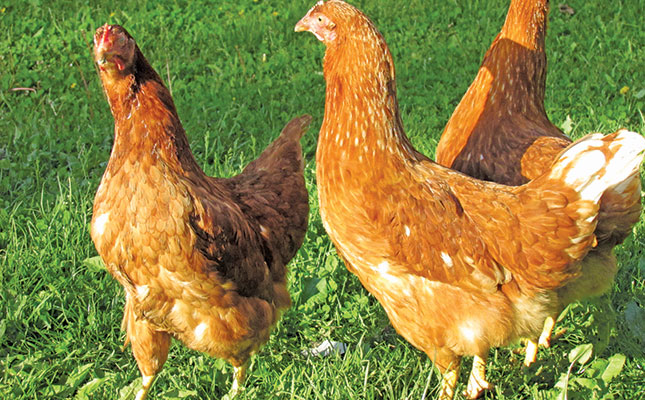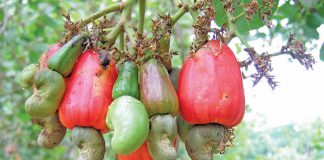
Photo: Julinda Schroeder
Since Poland became a member of the EU in 2004, poultry production has increased exponentially, and today the country is the largest producer of poultry products in Europe.
Data from the Central Statistical Office in Poland indicates that between 2012 and 2018, poultry numbers increased 60,5% to 201,3 million, mainly as a result of a 27,7% increase in the number of layer hens to 56,3 million, and an 82% growth in broiler numbers to 124,4 million.
Duck numbers increased 99,3% to 5,1 million and turkeys 57,1% to 14,4 million, while the number of geese declined 15,8% to one million.
In terms of overall contribution to agricultural production, poultry production increased to 13,7% in 2018, amounting to €4,4 billion (about R71,75 billion), almost 8% higher than in 2017.
In addition, export revenues from poultry meat, products and offal amounted to €2,8 billion (R45,66 billion) in 2018, compared with €2,3 billion (R37,5 billion) in 2017.
“The poultry sector in Poland plays an increasingly important economic, social and environmental role, and is an essential element of the food security policy,” a recent report by the Polish Institute of Agricultural and Food PolandEconomics’ National Research Institute (IAFE-NRI) says.
Export strategy
Exports have become a significant marketing avenue for the Polish poultry industry, and since 2012, exports have increased from 16% of national production to 61%.
Data from the Central Statistics Office indicates that between January and August 2019, Poland exported 1,14 million tons of live poultry, meat, offal and poultry products (carcass equivalent), which was 11% more than during the same period in 2018.
About 860 000t of poultry products (6% more than the previous year) were exported to countries in the EU, while 286 000t were exported to non-EU countries, for a 27% increase.
In 2018, the major export destinations in the EU for poultry meat from Poland were Germany (15% or 141 000t), the Netherlands (9% or 80 000t), the UK (8% or 76 000t), and France (6% or 60 000t).
Outside the EU, poultry meat is mainly exported to Ukraine, South Africa and Hong Kong.
Lukasz Dominiak, the former director general of the Polish National Poultry Council-Chamber of Commerce (KRD-IG), says in a recent report that the reopening of the Chinese market to Polish poultry is one of the industry’s great successes, following the avian influenza outbreak.
“The Ministry of Agriculture and Rural Development, the General Veterinary Inspectorate, as well as the KRD-IG, worked hard to restore exports after an interruption of a year and a half. Poland is the sole EU country that has returned to the Chinese market.”
According to the latest IAFE-NRI forecast, it is expected that Polish poultry exports in 2019 will increase 8% year-on-year, with the country maintaining a price advantage for poultry products in the EU market, along with the dynamic development of exports to non-EU markets.
In the first half of 2020, exports are expected to expand a further 6%, but could be limited by growing price competition from Brazilian and Ukrainian producers, as well as the withdrawal of the UK from the EU.
“Unfortunately, despite the good international position of the Polish poultry sector and its large export potential, barriers adversely affecting future expansion possibilities [are evident]. Such restrictions include the price of our products which, despite being competitive on the European market, still remains higher in comparison with the offer of Brazil, the US, or Ukraine,” Dominiak says.
Promising prospects for exports have also been identified in Asia, including Japan, South Korea and Singapore, as well as countries in Africa, such as Ghana.
Challenges
Due to the high quality and production safety standards demanded in the EU, which are some of the most restrictive regulations covering the entire value chain anywhere in the world, price plays a vital role in negotiations with many importers, the IAFE-NRI says.
Another factor limiting the competitiveness of Polish poultry on the global market is the challenge of sending fresh poultry to remote markets, such as South East Asia.
“Despite the barriers inhibiting the development of certain export directions of Polish poultry, our country has achieved a high and stable position on the global market and is reinforcing it constantly. Products from Poland are valued due to their taste advantages, attractive prices, which are among the lowest in the EU, and quality.
The meat is prepared with consideration [for] extremely high standards POLANDof safety, product quality, as well as animal welfare and environmental protection. The combination of all these elements makes Polish poultry stand out on the market with a favourable quality-to-price ratio,” the report says.
Another characteristic of Polish production is vertical integration, with producers maintaing full control of the entire production process as well as the marketing of the poultry meat.
The uncertainty surrounding Brexit is, however, continuing to weigh on the industry, according to the forecast, as the UK is one of the most important markets for Polish poultry within the EU. Leaving the EU could result in the UK limiting poultry imports from the common market.
This would force Polish exporters to look for alternative outlets for large volumes of poultry meat that have, up to now, been reaching the UK market.
“The development of new trade agreements with the UK after Brexit will be particularly important for Polish entrepreneurs, as the country is the second-largest importer of Polish poultry and poultry meat products, after Germany,” the IAFE-NRI says.
“Another persistent problem in the industry is the market imbalance caused by cheaper poultry from outside the EU. Exploiting legal loopholes, Ukraine introduces products failing to meet the EU standards, but characterised by much lower prices, to the EU market.
Putting an end to this practice is crucial for the further functioning of the sector.
“Another key issue is the search for and gradual introduction of domestic sources of feed protein as an alternative for imported soya bean, as announced by the Ministry of Agriculture and Rural Development.”
The industry has received the go-ahead to use genetically modified feed for the next two years, the IAFE-NRI says.
Responding to questions from Farmer’s Weekly, the IAFE-NRI says because a considerable proportion of the country’s domestic poultry production is destined for exports, another potential challenge is export bans for political and veterinary reasons.
The occurrence of certain diseases, such as avian influenza, could result in the closure of markets in countries outside the EU. Another obstacle could be the introduction of restrictions on ritual slaughter, such as halaal practices, as some countries purchase only this type of product.
One of the main objectives in further developing the Polish poultry sector is greater diversification of export destinations to non-EU markets. In this regard, in terms of the production potential and price levels, Brazil is Poland’s main competitor on the global poultry market.
Desire for convenience
The IAFE-NRI says the Polish market demands poultry products that are quick and convenient to prepare. “Purchases made by Polish consumers are dominated by poultry breasts and legs.
“The most popular type of poultry meat is definitely chicken meat, [and] the second place is occupied by turkey meat. The demand for ducks and geese is much lower, but this market segment is characterised by a steady increase in consumer interest, which results from the improved income situation of the population.”
The most popular poultry products are cold meat, including sausages. In 2018, 182 000t of poultry cold meat were produced, which was 7% less than in 2017, and its share of the total production of poultry products was 74,3% in 2018, says IAFE-NRI.
The Polish National Agricultural Support Centre sponsored all travel expenses for the trip, including flights and accommodation.













